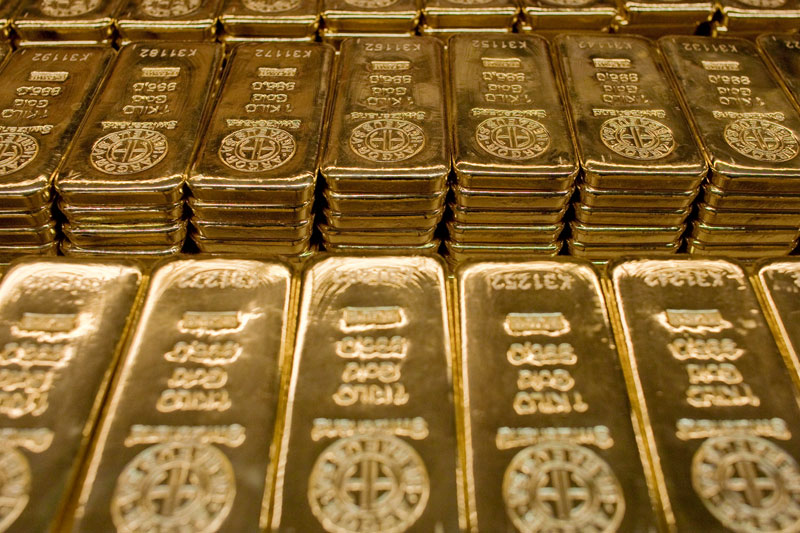Investing.com - Gold inched lower after a sharp two-day rally on Tuesday, as investors looked ahead to key U.S. economic data later in the session for further indications on the strength of the economy.
Gold for February delivery on the Comex division of the New York Mercantile Exchange shed $3.30, or 0.31%, to trade at $1,077.30 a troy ounce during European morning hours.
A day earlier, gold hit $1,081.40, the most since December 9, before ending at $1,080.60, up $15.60, or 1.46%. That followed gains of $15.40, or 1.47%, on Friday.
The U.S. is to publish final figures on third quarter economic growth at 8:30AM Eastern Time Tuesday. The data is expected to show that the economy expanded 1.9% in the three months ended September 30, compared to last month's preliminary estimate of 2.1%.
At 10:00AM, the National Association of Realtors is to release data on existing home sales for November, amid forecasts for a gain of 0.5% to 5.37 million, following a decline of 3.4% a month earlier.
Trading volumes are expected to remain light in the coming days due to the Christmas holiday and as many traders already closed books before the end of the year, reducing liquidity in the market and increasing volatility.
The dollar index, which measures the greenback’s strength against a trade-weighted basket of six major currencies, was little changed at 98.48, off last week's two-week peak of 99.33.
The Fed raised interest rates for the first time since 2006 last week in a widely expected decision. Speaking at a press conference following the announcement, Fed Chair Janet Yellen pledged that the FOMC will not be mechanical in its approach to normalize monetary policy and that future rate hikes would be gradual and data dependent.
According to its latest median projections, the FOMC anticipates that the Fed Funds Rate will reach 1.375% by the end of 2016, implying four quarter-point hikes next year. However, the Fed funds futures currently suggests there will be just two rate hikes in 2016, one in June and one in December.
A gradual path to higher rates poses less of a threat to gold prices than a swift series of increases.
The yellow metal is on track to post an annual decline of 10% in 2015, the third yearly loss in a row, as speculation over the timing of a Fed rate hike dominated market sentiment for most of the year. Rising interest rates historically have been bad news for gold, which can't compete with the higher interest rates offered by other assets.
Meanwhile, silver futures for March delivery declined 10.0 cents, or 0.7%, to trade at $14.21 a troy ounce. Silver prices sank to $13.62 on December 14, a level not seen since August 2009.
Elsewhere in metals trading, copper dipped on Tuesday, but held near the prior session's five-week peak as a softer U.S. dollar and speculation that Chinese producers will scale back production to combat falling prices provided support.
Copper is on track to post an annual decline of 27% in 2015 as fears of a China-led global economic slowdown spooked traders and rattled sentiment.
The Asian nation is the world’s largest copper consumer, accounting for nearly 45% of world consumption.
